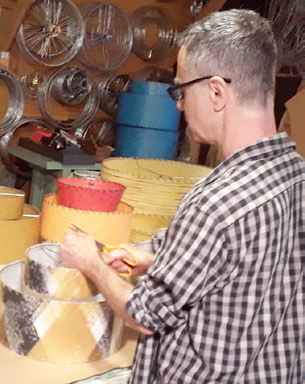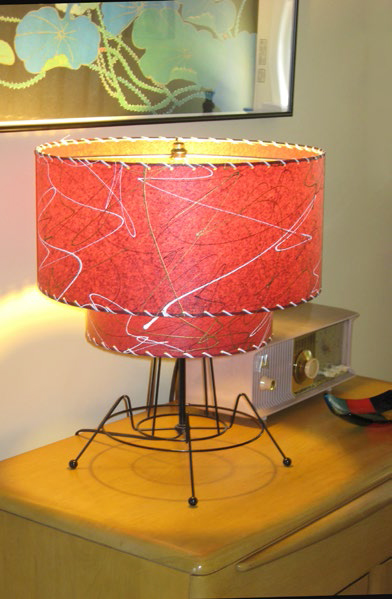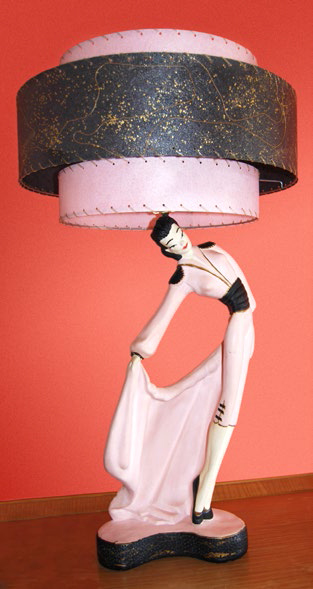Swayed by the Shade - Page 3
 |
|
|
 |
|
|
 |
|
|
METEOR LIGHTS
Coming from a background in industrial design, carpentry, and manufacturing, Rob Fine had been designing and fabricating his own acrylic-base lamps as early as 1990, but didn't delve into creating mid-century modern lampshades until six years later, when a friend who collected postwar design challenged him to give it a try.
"I sourced the materials and figured out the fabrication techniques, while my friend lent her color, MCM, and design expertise—and together we made a shade that I still have in my possession today," Fine recalls. "Suddenly people were asking us to make shades for them—and it took off from there."
That discovery led Fine to launch Meteor Lights in San Francisco in 1996.
Through 1950s fiberglass shades, Fine believes, we can truly appreciate the art and design of the period. "The free-form web design inspired by the American Abstract Expressionist painters, especially Jackson Pollock, was characteristic of 1950s modern lighting design."
Meteor creates exact and authentic 1950s lighting replicas, as well as variations incorporating contemporary color palettes and designs. "Combining design elements from different eras is a great way to create fresh, unique, and inspiring design," says Fine.
However, he adds, "Looking at my shades from an art and design standpoint, I generally stay authentic to the period, but I can do any color, and I have no problem incorporating colors from different periods.
"These are period reproductions, but each one is unique in itself. I'm not a purist or a snob who refuses to bend the rules a little, but I do have my limits."
Today's fiberglass, Fine points out, is somewhat different than the mid-century variety. "The original material was available in different colors, textures, laminates, and substrates, but now it's just made in white and one basic texture-laminate-substrate configuration."
However, Fine considers fiberglass still to be the best lighting diffusion material, much better than the re-purposed paper or upholstery found on most shades today. And he can readily work around fiberglass' white color limitation.
"People are often surprised when they learn I can match almost any color, with the understanding that color coming from a back- or ambient-lit translucent, textured material reads differently than it does on opaque upholstery and walls. I can work from a Pantone guide, paint chip, even a fabric swatch."
Fine admits that most of what he does is custom craft that's labor intensive, and the mixing of his proprietary non-toxic stains and applying colors is tricky to do well. "That's why people have been trying to pry my application methods out of me for years," he says. "But I'm sworn to secrecy."
While considering today's market and the future of reproduction lampshades, Fine finds that "there's actually plenty of demand for it [today and for years to come], because new people are always discovering mid-century modern, perhaps because it was the high point of domestic and international design.
"My customers come from all over, but especially from areas that experienced a postwar boom, such as Southern California, Florida, North Carolina, and Texas—but also places like New York, where people are very particular about design."




